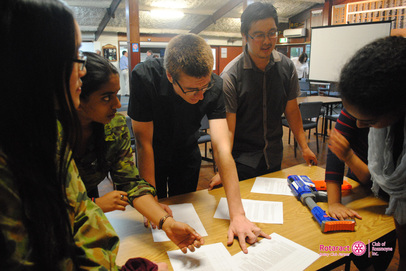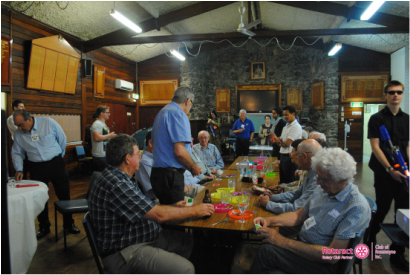Last month, I had the opportunity to run the Global Dinner experience again. This time I tried to integrate some digital technology, in the form of a Twitter Wall, into the experience.
A Brief Overview of the Experience
The Global Dinner is a dining experience where attendees interact with a theatrical experience to provoke discussions about global poverty. The primary medium is food and its service to the different groups of people. You can read more about the experience here.
Technology
In this version of the experience, I wanted to increase audience participation, as well as improve the awareness of different groups within the participants of the events occurring throughout the evening. To do this, I implemented a number of journalist roles for the facilitators and included a twitter wall on a screen that all the participants could see.
The journalists were given prompts on the items they should post about over the course of the evening, with input from the participants. These included the participant's stories, reactions to events and their general mood.
The journalists were given prompts on the items they should post about over the course of the evening, with input from the participants. These included the participant's stories, reactions to events and their general mood.
Results
By the end of the night we had managed to capture a lot of the participant's experiences through the tweets made by the journalists.
From feedback we received, those able to see the Twitter Wall, deliberately set up to restrict access to those participants whose countries had reduced access to news media, found they were able to gain a more holistic understanding of the events throughout the evening.
Mixing this with "live crosses" for interviews helped to further strengthen the understanding of the disparity between those nations better off and those worse off.
From feedback we received, those able to see the Twitter Wall, deliberately set up to restrict access to those participants whose countries had reduced access to news media, found they were able to gain a more holistic understanding of the events throughout the evening.
Mixing this with "live crosses" for interviews helped to further strengthen the understanding of the disparity between those nations better off and those worse off.
Learnings
Overall, I think the premise was executed well and had the desired impact on the participants. Not everything went as well as expected, with the journalists feeling under the pump to put out news and the Twitter Wall being too difficult to read even for some of those close to the screen.
Changes we would make for future iterations include additional "live crosses", the use of short video interviews, increased audience participation (crowdsourced journalism) and a better Twitter Wall app.
These suggestions seem to threaten the core experience of the evening, but I believe that with proper control over those who have access to their phones and limiting their use to posting about the situation, we will be able to reflect the changes wrought by social media in how news enters the global purview.
Changes we would make for future iterations include additional "live crosses", the use of short video interviews, increased audience participation (crowdsourced journalism) and a better Twitter Wall app.
These suggestions seem to threaten the core experience of the evening, but I believe that with proper control over those who have access to their phones and limiting their use to posting about the situation, we will be able to reflect the changes wrought by social media in how news enters the global purview.
Fundraising
The Global Dinner experience was run by the Rotaract Club of Rossmoyne to raise funds to buy a Shelterbox, and I am proud to say that through these experiences we have raised the $1000 necessary! The Club will be donating these funds to Shelterbox Australia shortly to prepare a new Shelterbox in preparation to give a family the help they need in rebuilding their lives after a natural disaster strikes.







